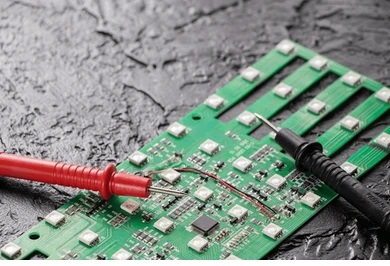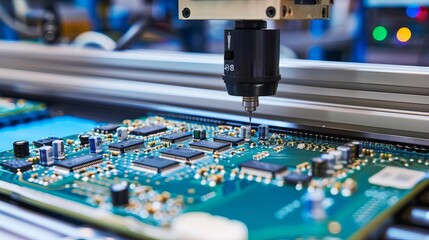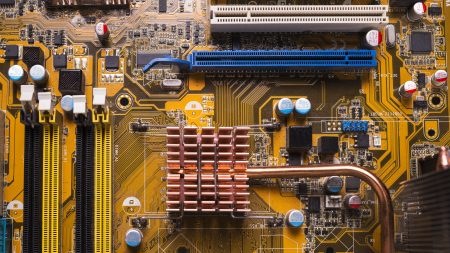- +86-755-23012705
- Building 3, Jinfeng Industrial Park, Fuyong Street, Baoan District, Shenzhen ,China
- [email protected]
Surface Mount Devices (SMDs) have become the cornerstone of modern electronic manufacturing. These components, which are designed to be mounted directly onto the surface of a printed circuit board (PCB), offer several advantages over traditional through-hole components. As electronics become more compact, reliable, and cost-effective, SMDs are increasingly used in everything from consumer electronics to automotive and industrial applications. In this blog, we will explore the numerous benefits of SMDs and why they are the preferred choice for most modern electronic devices.
One of the most significant advantages of SMDs is their small size. SMD components are designed to be mounted on the surface of the PCB, which allows for much smaller packages than through-hole components. For example, SMD resistors, capacitors, and ICs typically come in packages like 0603, 0805, and 1206, which are significantly smaller than their through-hole counterparts.
The reduced size of SMDs allows for high-density circuit designs. This compactness is essential for portable devices like smartphones, tablets, and wearables, where space is limited. As a result, designers can pack more functionality into a smaller space, leading to more feature-rich and lightweight products.
Because SMD components are smaller and can be placed directly on the surface of the PCB, they enable much higher component density. This high-density design means that more components can be placed on the same-sized board, which is especially beneficial for complex circuits and multi-functional devices. As electronics continue to advance, there is a greater demand for devices that perform multiple tasks without taking up much space. SMD technology meets this demand by enabling more compact and efficient designs.
In addition, high-density designs reduce the need for multiple layers of PCB, which helps to lower the cost of manufacturing and improves the overall performance of the device.

SMDs offer improved reliability compared to through-hole components. With through-hole components, the leads must pass through holes in the PCB and are then soldered on the opposite side, creating mechanical stress and potential points of failure. In contrast, SMD components have leads that are soldered directly onto the surface of the PCB, creating a more secure and robust connection.
Additionally, SMDs are less susceptible to vibration and shock, making them ideal for applications in industries like automotive, aerospace, and military, where components are subjected to harsh conditions. The elimination of leads and holes reduces the risk of solder joint fatigue, improving the long-term durability and performance of the device.
SMDs are designed for automated assembly processes, which makes them ideal for mass production. The small size and standardized packaging of SMD components allow machines to place them quickly and accurately on the PCB. Automatic pick-and-place machines can place thousands of components per hour, making the assembly process faster and more efficient compared to manual assembly of through-hole components.
The use of automated soldering techniques, such as reflow soldering, further speeds up the production process. In reflow soldering, the entire PCB with its placed SMD components is passed through an oven that melts the solder and creates the necessary electrical connections. This method is much faster and more cost-effective than hand-soldering through-hole components, especially for large production volumes.
The smaller size of SMD components leads to cost savings in several ways. First, the components themselves are generally less expensive than through-hole alternatives. This is because they require less material to manufacture and are easier to produce in bulk. Additionally, the automated assembly process reduces labor costs, as fewer manual interventions are required.
SMDs also reduce the overall PCB size and manufacturing complexity. With fewer layers and smaller PCBs, manufacturers can save on material costs, especially in high-volume production runs. Moreover, the ability to use automated assembly processes further reduces costs, making SMD-based manufacturing an attractive choice for mass-market products.

SMDs are particularly well-suited for high-frequency applications, such as radio frequency (RF) circuits, telecommunications, and high-speed digital systems. The shorter leads and smaller package sizes reduce parasitic inductance and capacitance, which can adversely affect performance in high-frequency circuits.
SMD components are designed to minimize these parasitics, which leads to better signal integrity, reduced noise, and more reliable performance in high-speed applications. This is especially important in products like smartphones, networking equipment, and automotive electronics, where high-speed signal transmission and processing are critical.
Thermal management is a key concern in electronic design, particularly in power-hungry devices such as processors and power supplies. SMD components, especially those in leadless packages like QFN (Quad Flat No-lead) and BGA (Ball Grid Array), offer superior thermal performance. The large, flat surface area of the component’s bottom allows for more efficient heat dissipation compared to through-hole components.
In high-power applications, SMD components are often paired with heat sinks or placed in positions on the PCB where heat can be effectively spread out. This reduces the risk of overheating and ensures that the device operates within safe temperature ranges, improving overall performance and longevity.
SMD technology provides greater flexibility in terms of the types of components that can be used and their placement on the PCB. Engineers have more options to customize designs, choosing from a wide variety of SMD components such as resistors, capacitors, inductors, diodes, transistors, and ICs. The flexibility to choose different types and sizes of SMD components allows for optimized circuit designs that meet specific performance, size, and power requirements.
Furthermore, the ability to place components on both sides of the PCB without worrying about the space required for leads makes it easier to achieve complex and intricate circuit layouts. This design flexibility is crucial for developing advanced consumer electronics, automotive systems, and industrial equipment.

SMD components have revolutionized the way modern electronics are designed and manufactured. Their small size, high assembly density, improved reliability, and cost-effectiveness make them the go-to choice for engineers and manufacturers worldwide. Whether it’s for creating ultra-compact consumer devices, high-performance communication systems, or reliable automotive electronics, SMD technology offers numerous advantages that drive innovation across industries. As electronic devices continue to evolve and become more sophisticated, SMDs will remain a key enabler of smaller, faster, and more efficient designs.
Simplify Your PCB Journey with XPCB Limited
XPCB Limited simplifies the PCB process for you. With our quick-turnaround prototyping and turnkey PCBA services, we ensure that your projects move forward smoothly and efficiently. Trust our commitment to quality and timeliness as we help you bring your designs to life. Choose XPCB Limited for a hassle-free PCB experience.






XPCB Limited is a premium PCB & PCBA manufacturer based in China.
We specialize in multilayer flexible circuits, rigid-flex PCB, HDI PCB, and Rogers PCB.
Quick-turn PCB prototyping is our specialty. Demanding project is our advantage.
Tel : +86-136-3163-3671
Fax : +86-755-2301 2705
Email : [email protected]
© 2024 - XPCB Limited All Right Reserve
